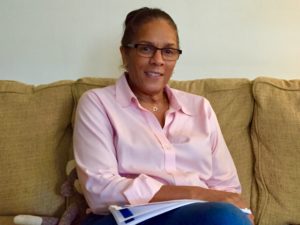After a student fell from a parking garage last week at the Ohio State University’s campus, Buckeye students took to social media to voice their demands for better mental health services from their school.

September is National Suicide Awareness Month, and in light of recent events, now is the time to be honest and have conversations with ourselves about these topics.
Recent studies show that college students are becoming more prone to having suicidal tendencies.
According to the Suicide Prevention Resource Center, suicide rates have been rising for most age groups since 2000. SPRC further states that suicide was the second leading cause of death in 2016 for people between the ages of 15 and 24.
A report published online by the Center for Collegiate Mental Health shows that during the 2016-2017 school year, 34.2 percent of 161,014 students reported serious thoughts of attempting suicide, and 10 percent of students were reported to have made an attempt. In comparison, during the 2010-2011 school year, only 24 percent of 82,611 students reported such thoughts, with eight percent having made an attempt.
According to a Twitter poll conducted by The Chimes, 88 percent out of 82 people polled said that they or that someone they knew had made a suicide attempt, and 66 percent out of 82 people affirmed that they knew of someone who actually had committed suicide.
The National Alliance on Mental Illness states that some warning signs to look out for include comments or threats about killing themselves, heightened substance abuse, aggressive behavior, social withdrawal, intense mood swings, talking, writing, or thinking about death, and impulsive behavior.
When asked if she thought that suicide was a problem on Capital’s campus, Dean of Students Jennie Smith said that it “…affects not just our students, but everyone here at Capital.” Smith went on to state that she has had to help several students throughout her career regarding this issue.
Dr. Cathy Wilson, the director of the Center for Health and Wellness said, “I don’t want to say Capital is any different than any of the other institutions, but over 1,000 students die from suicide every year…and the suicide rates for females is about a quarter of that for males.”

The Chimes asked Dr. Wilson for specific statistics regarding suicide and its effects on Capital students. Dr. Wilson said, “It is pretty consistent with what I shared with you earlier.”
In order to combat this issue, Dr. Wilson said that Capital has the CHW to provide, “both medical services and mental health services. The medical staff downstairs are…trained professionally to assess and treat depression, anxiety, and all mental health conditions.” Dr. Wilson said that they “…are able to provide individual counseling, group counseling, relationship counseling and that sort of thing for anyone [who’s] suffering from depression and anxiety or any other mental health condition.”
These services include groups such as the Depression Outreach Alliance, a support group for students with depression, which meets on Mondays from 11-11:50 a.m. The CHW also has Crisis Hours, which run 9-10 a.m. Monday through Friday, so students can get mental health help at the CHW without having to schedule an appointment.
However, despite the existence of these resources, Capital students seem to still feel the need for better mental health services. According to The Chimes’s Twitter poll, 61 percent of 69 people said they felt that suicide is an issue on campus. When asked if they had ever used campus resources to help cope with suicidal thoughts, 73 percent of 67 people said they were aware of Capital’s resources to help combat suicidal tendencies, but 82 percent of 71 people said no to having actually used them.
Luchauna Smith, a senior double majoring in psychology and religion, said that she felt the CHW could do more to promote their services in a more frequent and positive way. Smith stated that over the course of her college career she has noticed that the CHW does not have much of a presence on campus. In regards to promoting their resources, Smith said, “I feel like they should do it in a way that the student shouldn’t be afraid to admit that they’re not okay. I know a lot of times people don’t, especially our age, seek help because of shame…”

It is also worth noting that both Crisis Hours and DORA are held in the mornings when students are most likely to be in class, making it difficult for those stuck at their desks to utilize those specific resources.

